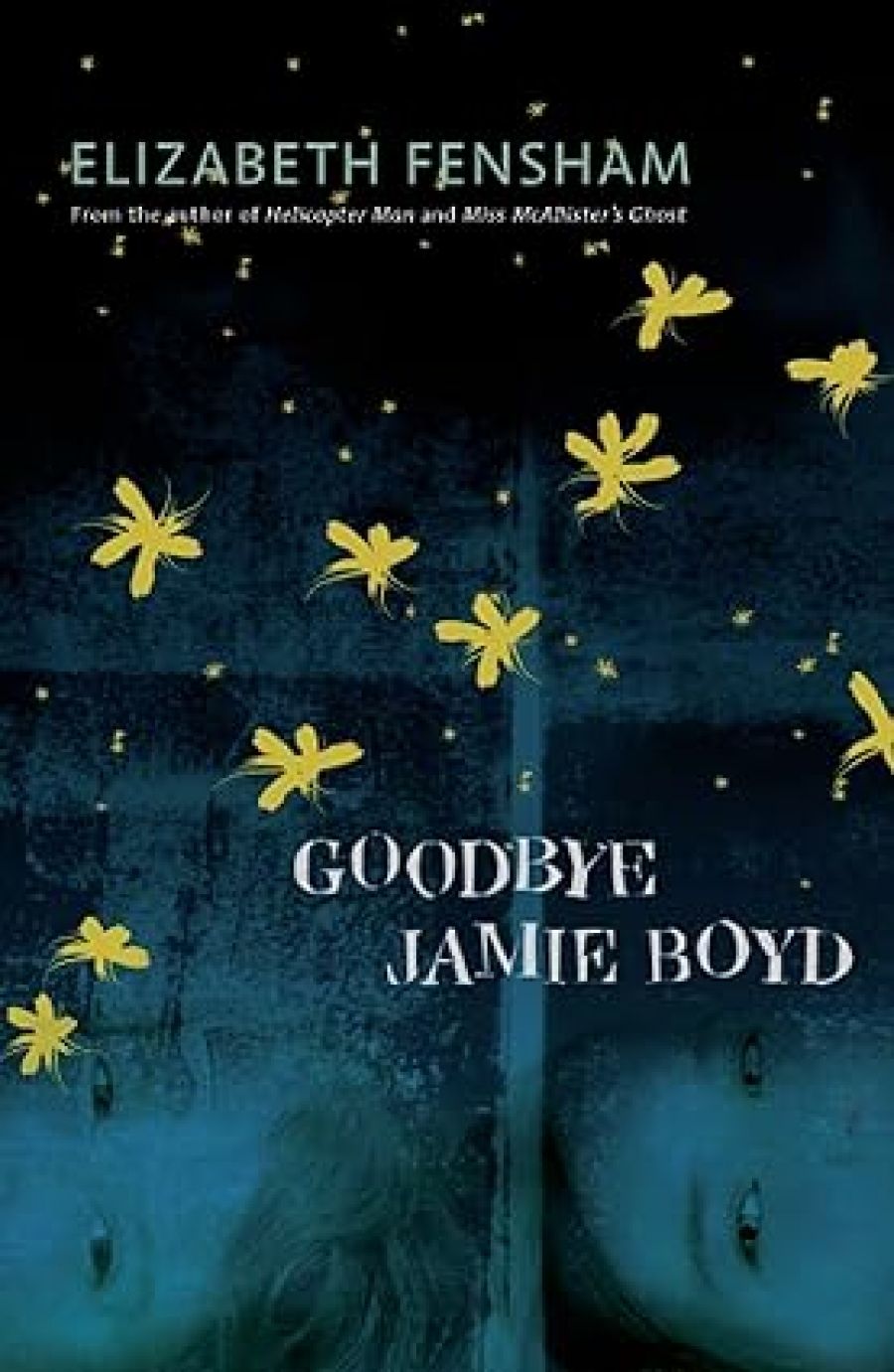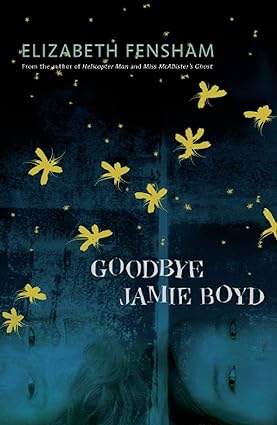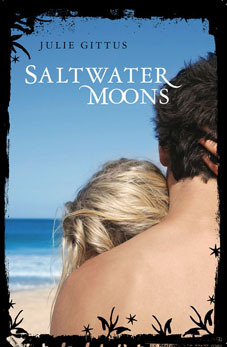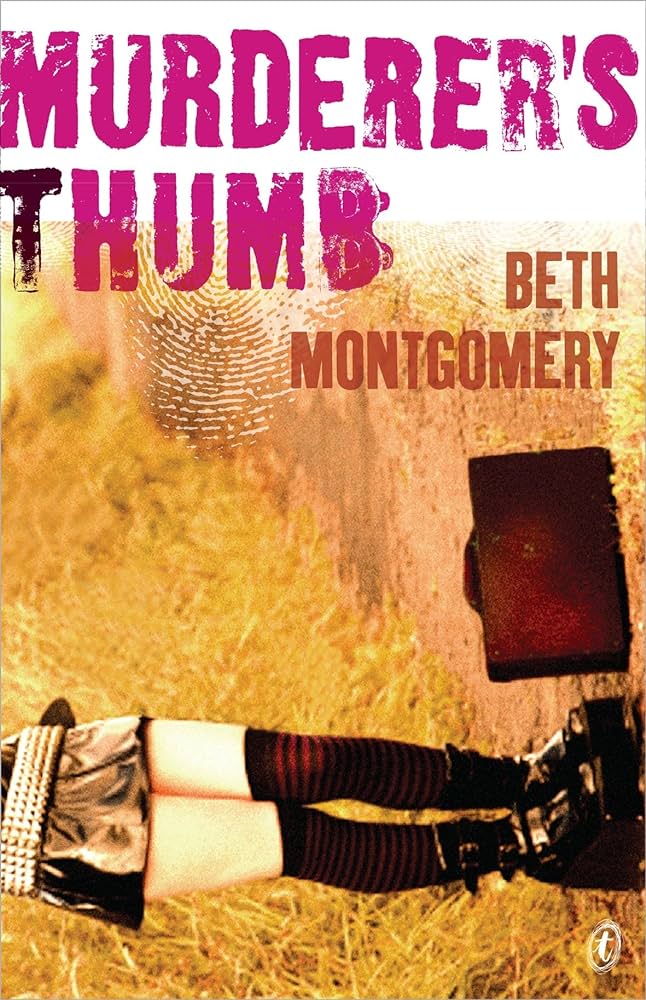
- Free Article: No
- Contents Category: Young Adult Fiction
- Review Article: Yes
- Article Title: Missing persons
- Online Only: No
- Custom Highlight Text:
It is no easy task to write a good crime novel that features a youthful sleuth. Too young to drink, to drive, to wander the mean streets or to have a wasted past, young sleuths also have parents lurking in the background, ever ready to assert their authority about meals and bedtimes. Full credit, then, to Beth Montgomery for overcoming these obstacles and writing a gripping mystery. In Murderer’s Thumb, fourteen-year-old Adam Statkus and his mother have relocated from the city to the country in yet another effort to escape an abusive husband and father. Rosemary Statkus, jittery and terrified, is in no state to assert any authority over her son, beyond instilling in him the necessity of keeping a low profile. That becomes harder to maintain when Adam finds the decomposed body of a teenage girl buried in a silage pit. Then he stumbles upon a hidden diary that contains clues to the murder. Others would also like to get their hands on it. The diary is a McGuffin, and the climactic exposure of the murderer a bit hammy, but Adam is a tough, credible and appealing protagonist, and the evocation of a close-knit farming community and the build-up of tension are terrific.
- Book 1 Title: Goodbye Jamie Boyd
- Book 1 Biblio: UQP, $16.95 pb, 88 pp
- Book 1 Cover Small (400 x 600):

- Book 1 Cover (800 x 1200):

- Book 2 Title: Saltwater Moons
- Book 2 Biblio: Lothian, $17.99 pb, 268 pp
- Book 2 Cover Small (400 x 600):

- Book 2 Cover (800 x 1200):

- Book 3 Title: Murderer’s Thumb
- Book 3 Biblio: Text, $19.95 pb, 299 pp
- Book 3 Cover Small (400 x 600):

- Book 3 Cover (800 x 1200):

Julie Gittus’s impressive first novel Saltwater Moons brought to mind After January (1996), the début novel of Nick Earls, in which poetry-loving Alex falls for a feral surfer called Fortuna while waiting to see if he gets into his chosen university course. Saltwater Moons contains many similar plot elements of which sun, surf, sex, poetry and imaginatively named heroines are only the most obvious.
Sunday Langley, the narrator, is in the last months of Year Twelve when she meets and is instantly attracted to a twenty-year-old university student called Tycho (pronounced, if you please, TySho). Tycho’s surfing mate, Mark, is five months into a sexual relationship with Sun’s best friend, Nicky, when he abruptly dumps her – by mobile phone. Invited to a beach-house party by Tycho, Sun is hoping to deepen a relationship that has begun platonically with a sensitive exchange of poems, but the opportunistic Mark plies her with alcohol and then takes her virginity in the sand dunes. Not only does this pair her with the wrong partner, but she also loses Nicky’s friendship when all is revealed. Longing for Tycho but unable to resist Mark and his demands, Sun belatedly instructs herself about contraception and somewhat hesitatingly embarks on a clandestine sexual affair. Her internal conflict is compounded by the fact that she and Tycho continue to exchange poems, despite his supposed attachment to another girl and her own relationship with Mark.
The big surprise of this novel is how triumphantly it rises above clichés of plot and its romantic cover (After January was similarly burdened). Gittus writes with insight and sensitivity, and with an acute eye and ear for the social behaviour of these young adults and their interactions with families. Sun’s voice is literate, authentic and realistic. She can quote Heraclitus as well as Czesław Miłosz, and she observes with a poet’s eye and ear: an ‘oriental rug that looked like a bed of crushed flowers’; the leaves of the orange tree that ‘clattered in bursts like distant applause’. Gittus effectively and movingly depicts the complexities of friendship and sex and the miseries of unrequited attraction and betrayal. In an inside-cover puff, Peter Bishop confesses that he read the book ‘with a constant pricking of tears’. I read it with similar engagement but also a profound sense of relief that all that adolescent angst was long behind me.
Elizabeth Fensham’s Helicopter Man (2005), a story about a boy’s struggle to understand his father’s schizophrenia, won the CBCA Book of the Year: Younger Readers. In her latest title, a verse novel for older readers called Goodbye Jamie Boyd she takes a different perspective on the same subject.
The opening line reveals a shocking piece of information: ‘Before I killed him / my big brother was my best friend.’ Anna and Jamie, we learn, have enjoyed an unusually close relationship and ‘when he twigged that I / was going to cut the ties, / he started getting nasty, / making threats …’Perhaps because I have read three novels in as many months that employ the device of doppelgänger or imaginary friend, I twigged too, so the disclosure halfway through the book that Anna is suffering from schizophrenia was no surprise. I am not sure it is meant to be; there are early clues that her older brother Jamie does not exist. He died, in fact, before Anna was born. But he is real to her. She recalls their closeness from primary school days, and how he was always the instigator of mischief. Playground pranks are one thing, but later Jamie starts urging her to mutilate herself in order to ‘prove’ that she loves him, and daring her to take dangerous risks. She is driving her younger siblings to town one night when his voice in her head urges her to ‘Take us all out / on the next big tree… / Go on.’ At this point, Anna finally consults her family GP.
How long seventeen-year-old Anna has been suffering her delusions and hallucinations is open to question. They seem to date from childhood, but as she learns, ‘even that could be the delusion / of a few months’. There is a suggestion that the condition may have been triggered by her dope habit: ‘Doc says just your very first puff / can send you over.’ In any case, she is not in the initial stage of the illness, and it is odd that nobody seems to have noticed or been concerned enough to intervene. The casualness with which Anna’s doctor dispenses her anti-psychotic medication (‘Take these tablets /and say / goodbye / to Jamie’) and the lack of monitoring she receives thereafter surprised me, as did the fact that Anna’s parents are never informed about their daughter’s illness. Her only confidant is her art teacher, and the novel ends on a triumphant note as Anna makes a presentation to the art class about Van Gogh, who suffered from a mental illness. And so do I, Anna confesses: ‘I could do with some / real brothers and sisters to stand by me.’ Her classmates rise to their feet and applaud. Cue final credits.
There is a quiet dignity in Anna’s confession and an acknowledgment that, in the treatment of schizophrenia, drugs alone are not the answer, but it is a soft-focus ending which also reinforces the stereotype of mental illness and artistic creativity. (Why couldn’t Anna be a whiz at accountancy or biology?) It also leaves readers with the impression that Anna is cured. If so, she is extremely fortunate, even more so when one considers that her treatment has been administered, not by a specialist, but by a GP in a small rural town. Fensham is clearly passionate about educating young people about schizophrenia, and her light touch and economy of expression have their appeal. But given the subject matter, those factors are also the novella’s weakness. Read Joanne Greenberg’s I Never Promised You a Rose Garden (1989) for the true horror of losing control of your mind.


Comments powered by CComment